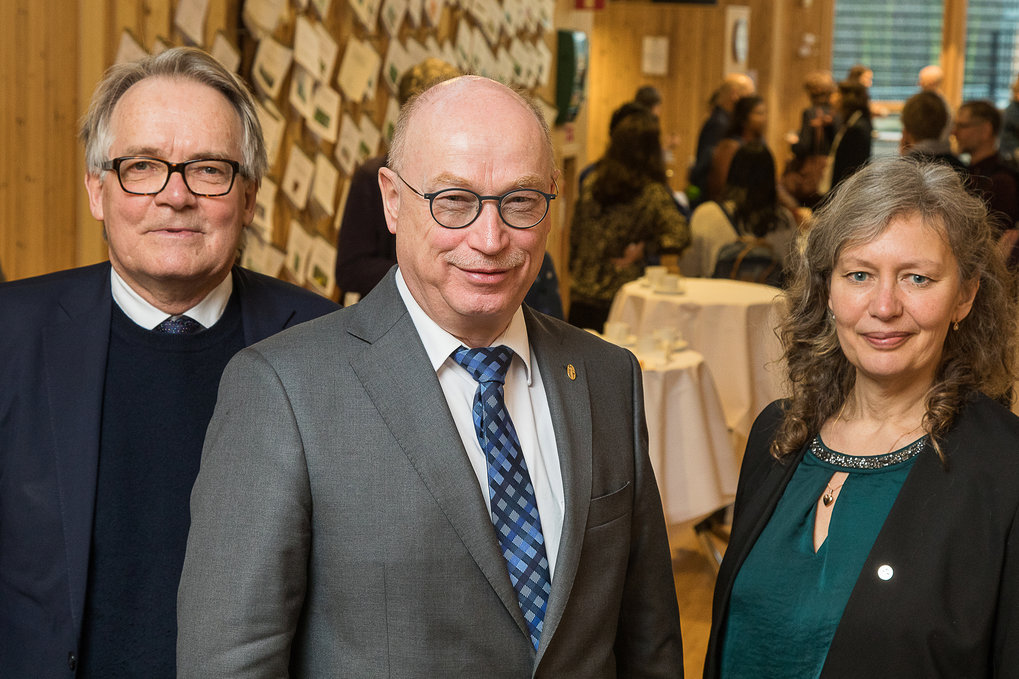Researchers from Germany and Sweden are studying the impact of human-generated environmental changes on insects
Anthropogenic changes in the environment also affect insects. The Max Planck Society, the University of Lund and the Swedish University of Agricultural Sciences now work together to study interactions between insects, the climate and humans at the new Max Planck Center "next Generation Insect Chemical Ecology". Together, they hope to find out how climate change, greenhouse gases and air pollution influence the chemical communication between insects. The collaborative center was officially launched on January 27, 2020, in Alnarp, Sweden.

Over the past 100 years, the influence of humans on ecosystems and the climate as a result of industrialization has become increasingly obvious. The climate is heating up, and sea levels are rising. Mass occurrences of pest insects such as the bark beetle are more frequent, and pests are spreading to ever wider areas. At the same time, there has been a drastic decline in total insect biomass everywhere in Europe. While pollinating insect species, which play an important role in our ecosystem, are threatened with extinction, diseases transmitted by insects are on the rise due to climate warming.
"As a result of climate change, entirely new challenges emerge with regard to pest and vector insects. Our new research cooperation aims to find out what impact these global changes have on insects, and why," says Bill S. Hansson, Director at the Max Planck Institute for Chemical Ecology. "Our collaboration at the Max Planck Center opens up new opportunities to systematically study the effects of environmental changes caused by humans on the ecology of insects," adds Christer Löfstedt, Professor of Biology at the University of Lund.
Tracing the chemical communication of insects
The scientists collaborating in the new research center mainly want to examine how higher temperatures, greenhouse gases and air pollution impact the olfactory system of insects, and how insects adapt to these changes in their environment. This research could considerably contribute to solving global problems in the context of climate crisis, global nutrition and combating diseases.
"Europe has been spared diseases transmitted by insects for a long time. However, in recent years, diseases such as West Nile fever and Chikungunya have spread further north. The spread of malaria and dengue fever is also facilitated by global warming. We hope that through the new cooperation at the Max Planck Center, we can develop better methods to combat these diseases," explains Rickard Ignell, Professor of Plant Protection Biology and an expert in the ecology of vector insects at the Swedish University of Agricultural Sciences.
Research units in Jena, Lund and Alnarp

Three research groups are involved in the Max Planck Center: the Max Planck Institute for Chemical Ecology in Jena, with its Evolutionary Neuroethology Department, the pheromone research group at the Department of Biology at the University of Lund, and the chemical ecology research group in the Department of Plant Protection Biology at the Swedish University of Agricultural Sciences. The three partners complement each other perfectly. The researchers bring their specialist knowledge on different types of insects, from herbivores (bark beetles and moths) and blood-feeding insects (mosquitoes) to the vinegar fly.
The three organizations also benefit from each other in terms of methodology. While at Max Planck, researchers in Bill Hansson' lab are studying odour-guided behaviour in insects and the underlying neurobiological substrates of odour-perception, the research group at the University of Lund is well-known for its research into the role of chemical signals for the communication between insects. In turn, the scientists at the Swedish University of Agricultural Sciences have excellent knowledge in the field of vector biology and are focusing particularly on the question of how the behaviour of disease-spreading insects is mediated by external chemosensory cues and internal physiological processes.
All three research organizations each contribute 500,000 euros to the Center per year each. Currently, applications are accepted for 17 junior scientist positions. Doctoral researchers and postdocs will mainly conduct research at one of the three institutions, while at the same time having access to the infrastructure and expertise of the other groups.






